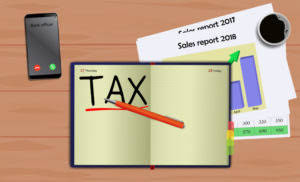
On the other hand, errors of commission in AI systems can occur due to the inclusion of biased or incorrect information in the training dataset or in the algorithms used by the system. For example, if a dataset contains stereotypes or discriminatory information, the https://www.bookstime.com/ AI system may incorporate these biases into its output. This can lead to the perpetuation of harmful stereotypes and discriminatory practices. In theory, errors of omission and commission can be contextualized within the broader framework of algorithmic bias.
Other Accuracy Metrics
Trial balance is prepared to check the arithmetical accuracy of transactions in a journal. In case of agreement in a trial balance, it can be assumed that the recording, posting and balancing are performed correctly. However, in case the trial balance does not agree, we need to locate the errors committed.
The LATER model of reaction time and decision
- In this article, we are going to talk about the differences between the error of omission and error of commission.
- On the other hand, Clerical Errors, as the name suggests, are the errors committed by the firm’s clerical staff, in the ordinary course of recording the transaction in a journal or posting it into the ledger.
- Furthermore, the Matthew Effect can also impact the recognition and visibility of certain publications.
- Errors appear in the trial balance sheet when registering the accounting thresholds.
- The error of omission refers to the error in which a transaction is not at all recorded in the books, either completely or partially.
- In the above examples the producer’s accuracy for the Urban class was 96% while the user’s accuracy was 71%.
- Let us discuss the major types of accounting errors in the following section.
The consequences of an error of omission can be serious, as it can result in misleading or inaccurate financial statements. It is important to rectify any errors as soon as they are discovered. The transaction is recorded in the books but not posted to the ledger.
What are exhaustive reasons for errors?
This is consistent with the notion that decisions are more difficult when the problem is not well understood and no clear response is available, i.e., in ill-defined problem situations. Decision difficulties arise when goals conflict or when no good choice is available. For example, weather at the destination airport might be satisfactory when the plane takes off, but may deteriorate rapidly and be below minimums by the time the flight arrives. The alternat airport may have clear weather, but it may be more distant, straining fuel resources. All options are evaluated in terms of their level of risk, but sometimes no low risk option is available. Then risk must be played off against what will be gained in each case, factoring in the crew’s level of confidence that they can follow through with the choice.
What is an Error of Omission in accounting?
These errors occur as a result of failing or omitting to record a transaction at all or mistakenly record the debit or credit not corresponding to its double entry. Errors of omission refer to reference sites that were left out (or omitted) from the correct class in the classified map. The real land cover type was left out or omitted from the classified map.
Key Differences Between Error of Omission and Error of Commission
I’ll discuss what errors and omissions insurance in real estate is, what it covers, costs for insurance premiums, and how to file a claim. Unfortunately, CGPT failed entirely to match the summary it produced with the correct citation. First, CGPT linked summaries to their citations 100% incorrectly, which is an error of commission and of omission. It is an error of commission because it includes the authors who are not part of the research, and it is an error of omission because it excludes the author whose literature was used to retrieve the summary. Second, CGPT produced worse outcome of errors of omission/commission by precisely linking wrong citation to the abstract.
How does error of commission impact financial records?
They are in a dynamic state; their equipment may be changing over time, the weather is changing over time and their location is changing over time. 17 (right) shows an example of error responses of this kind in a task where the subject was required make a saccade to the larger of two targets, where the difference in size was in one case 6% and in the other, 2%. As would be expected, the easier discrimination error of omission and error of commission results in a larger value of Δμ and thus a higher proportion of correct responses, and a larger separation of the pair of curves. Accuracy can be defined as the ratio of correct statements to errors of commission. Thus, this kind of error would lead to the unequal of debit and credit sides. Typically, we can detect such errors by taking the difference between debits and credits and divide it by 9.

There are different types of errors in accounting; some of them can result in an imbalance of trial balance. Error is considered as an unintended mistake during the course of recordkeeping. Typically, material errors would lead to incorrect decision making by the user on the basis of the financial statements that contain such errors. De Boer and colleagues measured the time to detection of a system failure that occurred at the top of descent and was not alerted by automation (no warning message on the ECAM), but was signaled by other cockpit indicators. Only four out of 35 participants detected the failure within the norm time of 45 seconds, and 12 did not detect the failure before the bottom of descent. More experienced pilots as a whole were less susceptible to automation bias (lower cumulative stimulus probability) and novice pilots exhibited a greater variation in performance.

Accordingly, accounting monetary journal accounts do not materialise in the accounting books. Additionally, there is never any debit or credit access in the journal accounts of the ledger book. In the end, the answer will be correctly matched with the trial balance. Hegemonic errors refer to the notion of Mathew Effect explained elsewhere in this article, which alludes to the position of the person in the social status of academic fields rather than intellectual capabilities or contribution of the field. While cognitive bias and error refer to the mental capacity of information process (Tversky and Kahneman 1974), the hegemonic error occurs because social status in different domains or levels.
- Errors of omission and commission are both types of algorithmic bias that can result in harm to individuals and communities.
- By carefully selecting an E&O insurance provider, you can secure reliable protection and focus on growing your real estate business with confidence.
- In the last stage, the analysis tested whether the actual abstract of a research article was correctly linked to the respective authors.
- One possible explanation is that crews lack the relevant experience or fail to retrieve the knowledge needed to assess risk appropriately in those specific circumstances (cf. Klein, 1993b).
- Likewise, Sitkin (1992) argued that uniformly positive experiences provide no baseline by which to determine when the situation is becoming more dangerous.
- An organization’s emphasis on productivity may inadvertently set up goal conflicts with safety.
- Another class of problems is errors of omission which come from content or functionality which is not present but arguably should be.
Table of Contents
- Indeed it may still be possible to perform core tasks with the system even with these errors of omission.
- The best way to determine if you have made an error of omission is to carefully check your work for any missing information.
- If you catch the error before closing your books, you can simply add the entry in your general ledger.
- When the transaction is completely omitted to be recorded in the books of account, then it is called as error of complete omission.
The alternate airport may have clear weather, but it may be more distant, straining fuel resources. Then risks must be considered in terms of what will be gained in each case, factoring in the crew’s level of confidence that they can follow through with their choice. They are in a dynamic state; their equipment, the weather, and their location all will be changing over time. Under these circumstances the cognitive load on the crew may increase substantially, thereby increasing the probability of an error due to insufficient updating of situation awareness over time. A complete error of omission is when the accountant misses to record the financial transaction by way of a journal entry in its entirety. Such errors can result in under-reporting or over-reporting of profit.



